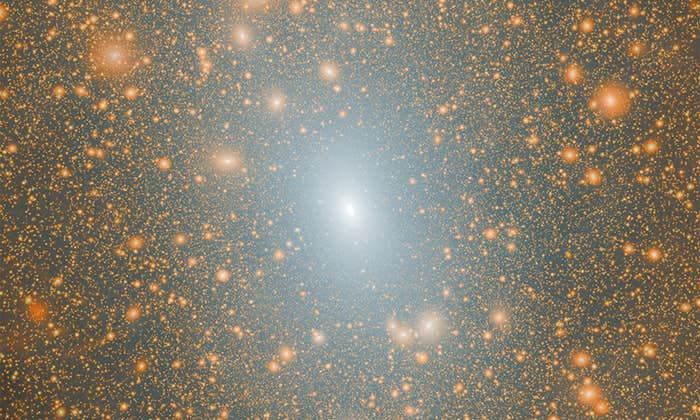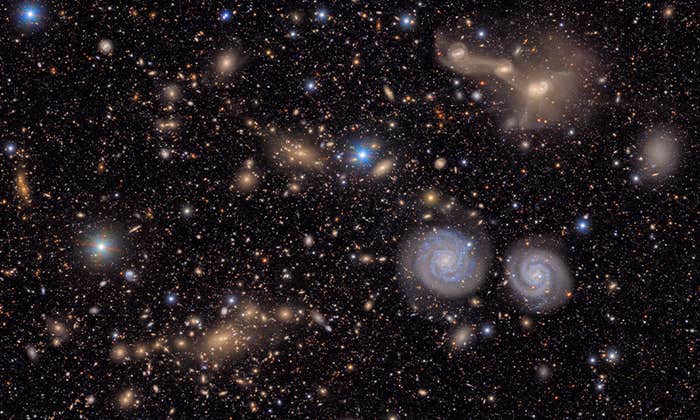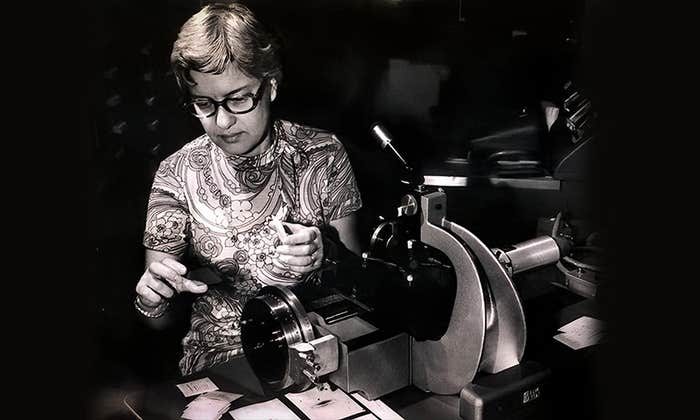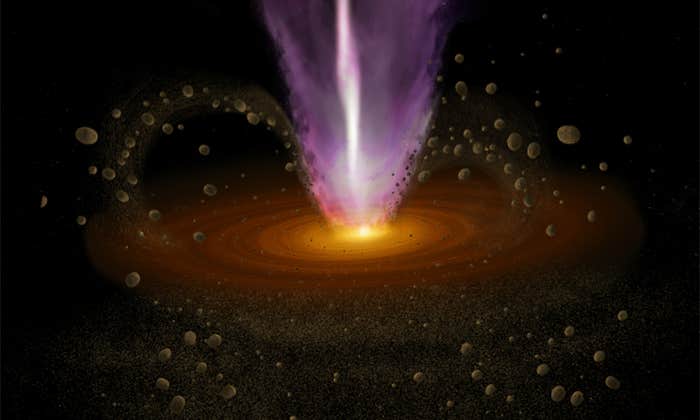While some scientists search for extraterrestrial life by landing rovers on Mars, launching telescopes into space, and scanning the skies with giant radio dishes, geobiologist Joseph Kirschvink thinks that the first telltale signs of alien life may be sitting on a shelf at NASA’s Johnson Space Center, bundled in a Martian rock that conveniently fell to Earth.
On the wall of Kirschvink’s office at Caltech hangs a black and white photo of the meteorite. Radioactive dating shows that the rock formed 4 billion years ago, when Mars was a warmer, wetter place. It was propelled to Earth about 16 million years ago, after a meteorite impact blasted fragments of the Martian surface into space.
Eventually the rock landed on the ice cap of Antarctica, in an area called Allan Hills, where meteorite hunters found it in 1984. Scientists named it ALH84001 after the date and location of its discovery. They traced its Martian origin by analyzing gases trapped in the rock’s pores. Those gases matched the atmospheric chemistry measured by the two Viking spacecraft, which landed on Mars in the 1970s.
What’s more, ALH84001 seemed to contain signs of life, suggesting not only that life could have once existed on Mars, but that it could have made its way to the Earth across the void of space. In fact, Kirshvink thinks it’s likely that life arose only once in our solar system—and that it didn’t start on Earth. “I think there were bacteria on Mars 4 billion years ago,” he says.
That would make us—and every living thing on Earth—the descendants of spacefaring microbes from Mars.
For Chris McKay, this would be something of a letdown. “My job is to search for life on other worlds,” says McKay, a planetary scientist at NASA’s Ames Research Center in Mountain View, California. “Not just for life, but for what I call a second genesis.”
The distinction, McKay tells me, is a crucial one. If we discover living things elsewhere in our solar system, for example, and they turn out to have a biochemistry similar to our own—with DNA, and familiar proteins, say—then we would still have no way to assess whether life in the universe is rare or common. Mars might have infected Earth with life, or vice versa. In either case Mars and Earth could be flukes, exceptional cases in an otherwise sterile cosmos.
If instead we find a true second genesis, it would be evidence for a fecund universe where life is the norm. “The difference between one [genesis] and two is astronomical,” says McKay.
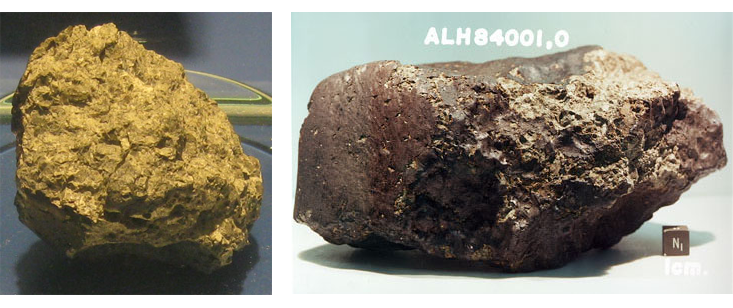
There were four independent lines of evidence suggesting that ALH84001 contained signs of life. The most photogenic was the presence of microscopic tubular shapes embedded in the rock, resembling fossils of bacterial cells that have been found on Earth. Scientists also detected traces of mineral deposits that are often byproducts of biological activity, and globules of organic chemicals commonly produced by terrestrial microbes. What got Kirschvink most excited was the fourth line of evidence—the meteorite contained tiny magnetic crystals known as magnetosomes, which some types of bacteria use to sense Earth’s magnetic field.
These observations prompted NASA to make a life-on-Mars claim in 1996 at an enormous press conference, and in a paper published in the journal Science. President Clinton lauded the research. “If this discovery is confirmed, it will surely be one of the most stunning insights into our universe that science has ever uncovered,” he said. Biologists, geologists, planetary scientists, and physicists requested that NASA send them fragments of the rock so they could set to work trying to confirm or refute these claims.
Over the years that have followed, most scientists have concluded that the evidence doesn’t hold up, at least not solidly enough to prove something so extraordinary as the presence of life on another planet. A number of experiments have shown that the “fossil bacteria,” the mineral deposits, and the organic chemicals could all have formed by natural, non-living processes.
But, to this day, Kirschvink maintains that the crystals of magnetite are tough to explain as being anything other than the remains of an indigenous Martian form of life. He was one of the scientists who received a sample in 1996, which he and some colleagues found contained several billion magnetite crystals.1 Using a scanning electron microscope—the crystals are typically only a few billionths of a meter in size—they found that 27 percent of the crystals were indistinguishable from those produced by earthly bacteria.
They published their result in 2000, and Kirschvink says there is still no plausible inorganic mechanism that accounts for the magnetosomes. “The easiest explanation? Biology.”
If Mars was the mother planet, Earth would have been the nurturing planet.
In his office, Kirschvink pulls up some images of magnetosomes on his computer; they look like minuscule beads. The magnetosomes found in earthly bacteria and in the Martian meteorite, he says, share two distinctive qualities: their shape and purity. Magnetosomes consist of crystals of magnetite, a common magnetic mineral. In their naturally occurring form, magnetite crystals are octahedrons. But in bacteria, evolution has molded them into elongated beads, strengthening their magnetic properties and making them better compasses.
The crystals in magnetosomes are also exceptionally pure compared with those of ordinary magnetite. “Magnetite is a garbage-bag mineral,” says Kirschvink. “It will suck lots of different contaminants in at the cost of its magnetism. These crystals are pure,” he says, tapping an image on his computer screen. “We’ve never seen these things outside of biology.” Of the four lines of evidence that the NASA researchers presented in 1996, only the magnetosomes have not been falsified, he says. “Not even close. A lot of people have tried, but I have seen nothing [non-biological] that can make those crystals—not even one crystal with those characteristics.”
Even so, most of Kirschvink’s colleagues aren’t convinced by his arguments. McKay says that magnetosomes in bacteria always occur in long chains, like a string of pearls, not as individual crystals. “It would be convincing to everyone, not just Joe, if the magnetosomes were in a necklace. If Joe found that in a meteorite, I would say ‘verily, it is so!’ ” Would the discovery of a string of magnetosomes be irrefutable evidence that Mars once supported life? “The string would,” says McKay. “Single crystals [aren’t].”
Steven Benner, a biochemist and the director of the Foundation for Applied Molecular Evolution in Gainesville, Florida, agrees with McKay’s assessment, but says Kirschvink’s ideas haven’t been falsified. “Joe’s is a minority view,” he says. “It’s an interesting hypothesis. At the end of the day I don’t think the case for Martian life [in the meteorite] has been completely dismissed. And I think Joe has the strongest example of an argument for there being a biosignature in that meteorite.”
Kirschvink is familiar with the objections, and knows he must find a magnetosome chain to convince his fellow scientists. The problem, he says, is that it’s exceedingly difficult to isolate magnetosomes from the hard rocky matrix of the Martian meteorite without obliterating the very things you’re looking for. The only instrument capable of such precision cutting is something called an ion milling machine, which would fire beams of atoms at the meteorite, slicing material around the magnetosomes. That might reveal whether the single crystals detected so far are actually parts of chains extending deeper into the rock. Kirschvink is planning to dissect the rock this way with the help of researchers in Japan.
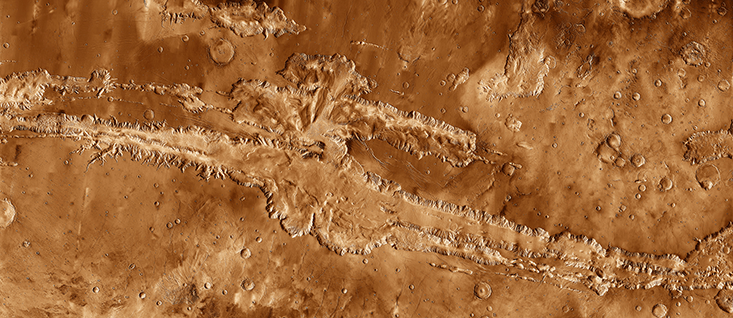
ALH84001 is older than the earliest known life on Earth. So if Kirschvink finds his beads, it means life probably started on Mars before it did on Earth. Although Mars is now cold and arid, with an atmosphere only one-hundredth as thick as Earth’s, it was much warmer and wetter 4 billion years ago. NASA rovers now trundling across the surface of Mars have uncovered ancient lake and stream beds, suggesting the planet likely once had shallow seas blanketed by a much thicker atmosphere.
While many scientists consider liquid water to be the most essential ingredient for life, Earth may once have harbored too much water. “The best evidence we have suggests that early Earth was completely covered by oceans,” says Kirschvink. Without some dry land, he says, it would have been difficult for the basic chemical ingredients of life to form. “The reason is very simple … if you link two amino acids together to make a protein, you have to remove water.” And that would have been impossible if the amino acids were immersed in an ocean. Life needed some land—literally a beachhead—to get started. Ancient Earth might not have had any dry land, but Mars certainly did.
“All this is controversial since we’re talking about a world 4 billion years ago,” says Kirschvink. “But it’s very clear that Mars had southern highlands, and what is looking more and more like a north polar ocean basin. If you’ve got volcanic terrain sticking up, with rainfall and streams and rivers—if life had managed to get started there, it would have thrived.” That scenario, which seems very likely to Kirshvink, has some remarkable implications: Life, after its genesis on Mars, might have spread from there to Earth, borne here by meteorites. And that would make us—and every other living thing on Earth—the descendants of spacefaring microbes from Mars. According to Kirschvink, we won’t find our first ETs on some other world—we just have to glance in a mirror. “I really think we’re Martians,” he says. For Kirschvink, life on Mars is unlikely to represent the second genesis that McKay is looking for.
Although the idea that life may have been seeded on Earth by comet or meteorite impacts is at least a century old, it remains a minority view among scientists, most of whom aren’t ready to accept a Martian pedigree for Earth’s life. Mars lies more than 30 million miles away—a long journey for man or microbe. But a rock blasted from Mars could have reached Earth in as little as six months, and given what we know about bacterial hardiness, the rock’s germy cargo could have arrived shielded and alive. Bacteria spores have survived on the outer surface of the International Space Station for 18 months, completely exposed to the vacuum and deadly radiation of space. In one recent experiment, Swiss researchers smeared strands of bacterial DNA onto the exterior of a rocket—the DNA remained viable even after the spacecraft’s fiery re-entry through Earth’s atmosphere.
They will have to dig deep, but I think there’s a better than 50 percent chance we’ll have our first alien.
If Martian bacteria did land here billions of years ago, they would have been released into a giant nutrient broth—Earth’s ocean—filled with dissolved carbon dioxide, iron, and phosphorous. Although it might be difficult for life to arise in a water world, once life had evolved—in some drier place—it could have thrived in Earth’s seas. And the newly arrived Martians wouldn’t have had any competitors. “Everything life would need would be in that ocean ready for life to come,” says Kirschvink. “And then: Splash! You get a meteorite from Mars breaking up, freeing entombed bacterial spores. One bug that can reproduce can grow exponentially, so the first self-replicating bug that could get here would take over.”
What happened to Mars? Why, if life originated there, did Mars never become another Earth, with its own diverse ecosystems replete with plants and animals? Why did those ancient Martian rivers and oceans disappear? Mars, it seems, was simply too small to sustain life indefinitely. With barely one-tenth the mass of Earth, and less than half the gravity, Mars couldn’t hold on to its atmosphere. The gases essential for life slowly leaked into space. Without an insulating sheath of air Mars gradually became the cold desert world it is today.
“If Mars was the mother planet, Earth would have been the nurturing planet,” says Kirschvink. In his telling there’s a tragic element to life’s origins. One of the very conditions that might have made Mars an ideal birthplace for life—its small size, which allowed it to cool faster from its primordial molten state than Earth did, so life could get an earlier start—also meant that living things could not continue to flourish there. “You may need a special solar system where a Mars-like mother planet can infect its neighbors. It may be that those mother planets are doomed to die, and neighboring planets, like Earth, adopt the kids.”
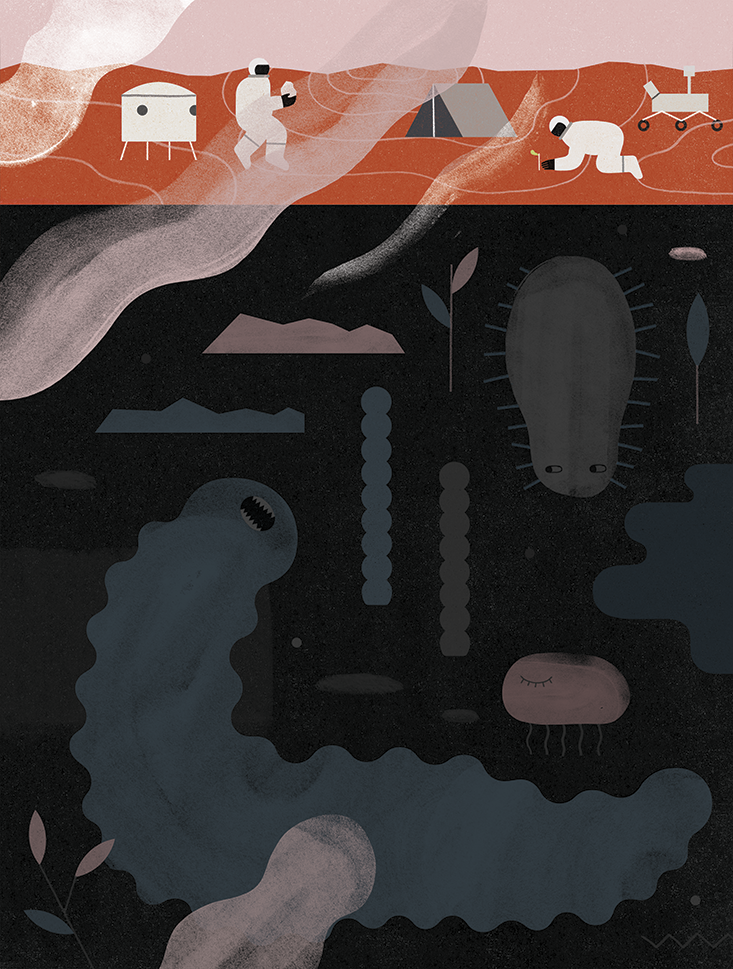
While Kirschvink scours ALH84001 for magnetosome chains here on Earth, other scientists are gearing up to scour the surface of Mars. Scientists at NASA’s Jet Propulsion Laboratory have drawn up plans for a mission that would return Martian rock samples to Earth. While that mission has no timeline or funding for the time being, McKay says if bacteria ever did exist on Mars, their fossil remains will be there, waiting to be found. “Magnetosomes are pretty robust,” he says. “They are the bacterial equivalent of bones.”
Some researchers think future missions might find more than magnetosomes and fossils on Mars. Life may still survive there, sheltered underground, says Gaetan Borgonie, a biochemist at the University of Ghent, in Belgium. He says those organisms might look something like the ones he discovered in our own planet’s deep subterranean ecosystems, which have barely been explored.
Beginning in late 2008, Borgonie led a team that found the deepest-dwelling land creatures on Earth—a new species of worm living more than 2 miles below the surface in a South African gold mine. The researchers named it Halicephalobus mephisto, after the demon in the Faust legends. Although the worm is only about half a millimeter long, it is far larger and more complex than the simple bacteria the scientists expected to exist at those depths. The worm from hell, as some news reports called it, feeds on bacteria that subsist on minerals in the rocks.
That discovery is helping guide scientists in their search for aliens. Most life on Earth is small, dumb, and deep, and the same might be true on Mars. “If life originated there, those animals or plants have had 3 or 4 billion years to evolve, and they might still be there. Life always finds a way. Always,” Borgonie says. “If NASA or ESA [the European Space Agency] starts digging on Mars, they will have to dig deep, but I think there’s a better than 50 percent chance we’ll have our first alien.”
He waves his hands overhead tracing the trajectory of an icy eruption. “It’s like free samples, take one!”
Kirschvink echoes this sentiment. When I ask him, Martian to Martian, if life might still survive on mother Mars today, he tells me it’s definitely not on the surface. “The atmospheric pressure is so low that water boils. Most of the planet is well below freezing most of the time. But we do know that once life evolves it can move into extreme environments. It’s done that on Earth. It’s gone deep; it’s gone high. It didn’t evolve in those environments but it moved into them. It’s pretty clear that if life got started on Mars it probably moved into those other environments and might still be eking out an existence.”
Not everyone agrees. To Steve Mojzsis, a planetary geologist at the University of Colorado at Boulder, the lack of obvious signs of life on Mars argues against the possibility that it ever existed there. “Life on Earth occupies the driest desert, the coldest glacier, the tallest mountain, the deepest sediments—it permeates the planet; there’s a rind of biological activity on our planet. Mars? There is no hint of it whatsoever. We’ve sent a fleet of invading spacecraft to Mars—it’s like the inverse of 1950s space horror movies—and we can’t find anything.”
The resolution may come with more digging. McKay is pushing for a mission that would search for underground Martian life by drilling about a meter into frozen ground at a site near the planet’s north pole. Icebreaker Life, as the project is called, would launch in 2018 if NASA approves it. McKay originally wanted to drill 10 meters down to penetrate below surface layers that might be sterilized by intense solar radiation. But mounting a drilling rig more than 30 feet long on a spacecraft would have broken the mission’s budget.
Another option—packing a disassembled drill on a spacecraft and putting it back together on Mars—wouldn’t be feasible either, since no existing robot has enough dexterity for the task. So McKay and his team have settled for a single meter-long drill that would swing into an upright position after the spacecraft lands.
McKay has tested some of the components of Icebreaker Life in Antarctica, and showed that a prototype drill can penetrate 3 feet of frozen ground in about an hour. When fully operational, Icebreaker Life would use a brush to collect samples after every 2 inches of drilling, passing them to instruments that would test for enzymes and other signs of life—perhaps even intact, living microorganisms.
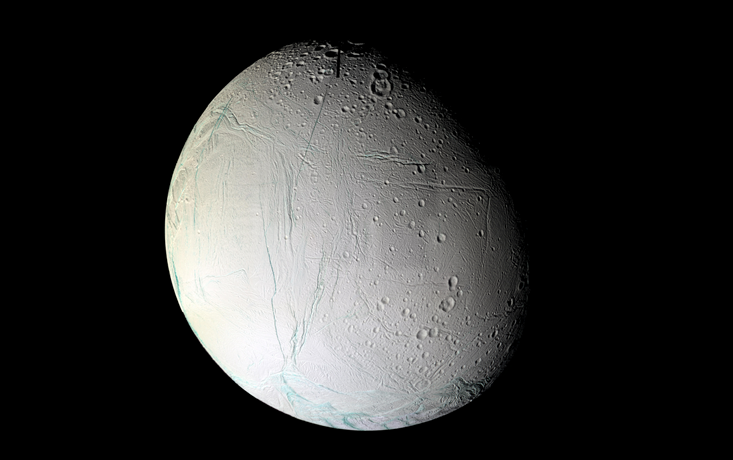
If life on Mars were found, its relationship to life on Earth would be determined by genetic analysis. Either Kirschvink’s hypothesis about Mars as a mother planet would be confirmed, or McKay would have his second genesis. But even without a second genesis on Mars, the possibility would remain that life has arisen elsewhere independently—on one of the hundreds of planets that scientists have discovered orbiting stars light-years away, or even farther out in our own solar system.
At the very top of McKay’s wish list of where to search for life is Enceladus, a Saturnian moon. It has an ocean sloshing beneath miles of ice. But Enceladus also has more than 100 geysers that spew ice hundreds of miles into space. If life exists in Enceladus’ ocean, the geysers might contain chemical traces of its presence. McKay can’t contain his enthusiasm when describing the moon’s plumes: He waves his hands overhead tracing the trajectory of an icy eruption. “It’s like free samples, take one!” he says.
McKay has already met with Japanese researchers to discuss plans for a joint mission to Enceladus. He wants NASA and Japan to send a probe through the moon’s geysers and deploy what amounts to a mechanical catcher’s mitt. Coated with a sticky gel, the mitt would collect material from the geysers; the spacecraft would return the samples to Earth. The same technology was used to snag matter from a comet’s tail in 2006, so there aren’t any new engineering hurdles to overcome. Since Saturn is more than 10 times farther away from us than Mars, a shared origin for life on Enceladus and Earth would be less likely, improving the odds that McKay’s second genesis might be found in the depths of that distant ocean.
If Mars and Enceladus and other candidate worlds in our own solar system turn out to be sterile, we now know there are plenty of others that might be friendly to life. NASA’s Kepler space telescope has logged more than 1,000 planets around other stars, and astronomers now estimate that our galaxy alone may contain as many as 40 billion Earth-like worlds. If life were found on any of them, the extreme distances would all but guarantee a second genesis. What are the odds that so much cosmic real estate is barren? As the Scottish philosopher Thomas Carlyle remarked more than a century ago, “If they be not inhabited, what a waste of space.”
Tim Folger writes about science and environmental issues for National Geographic, Discover, Scientific American, and other publications. He’s also the series editor for the annual anthology, The Best American Science and Nature Writing.


















